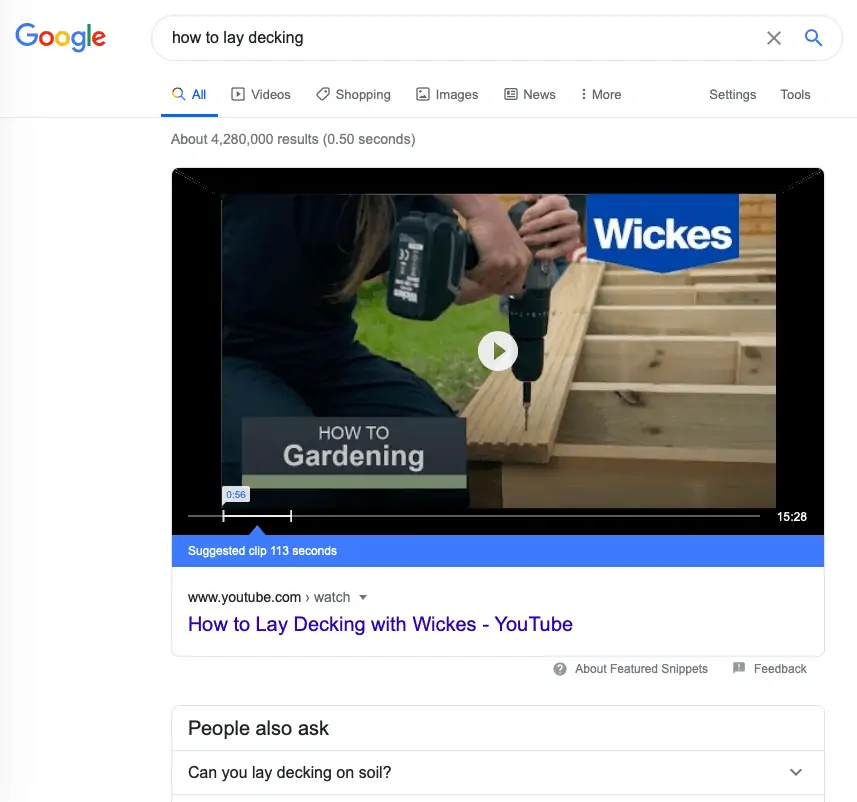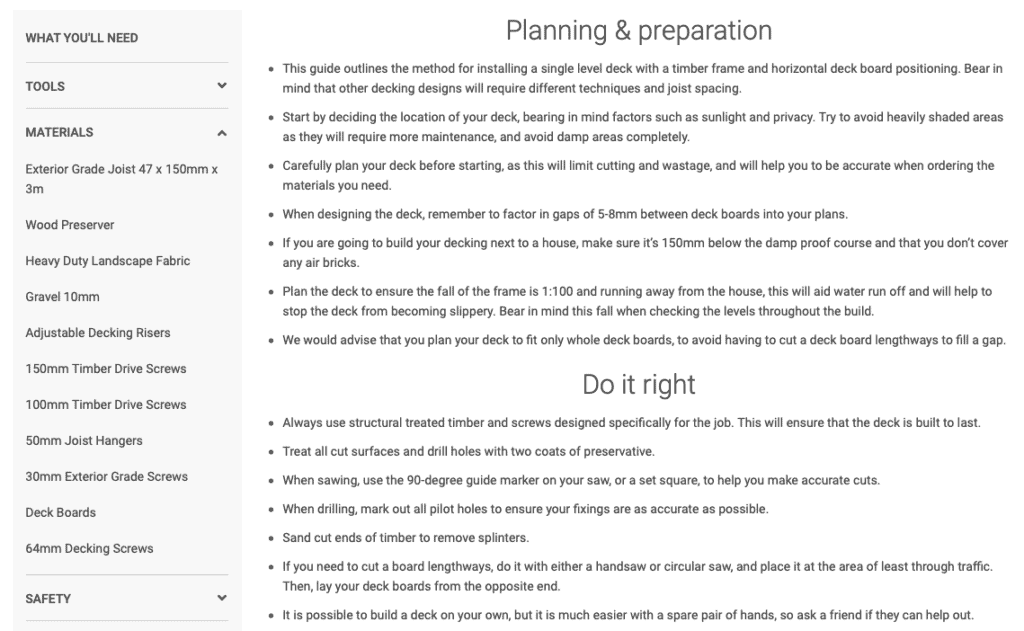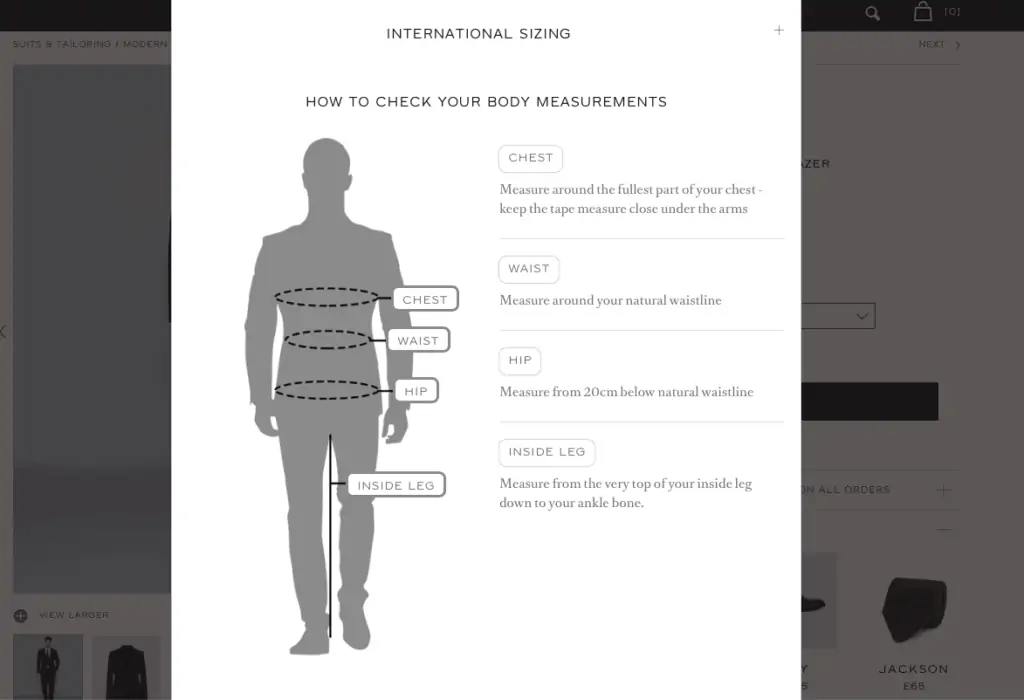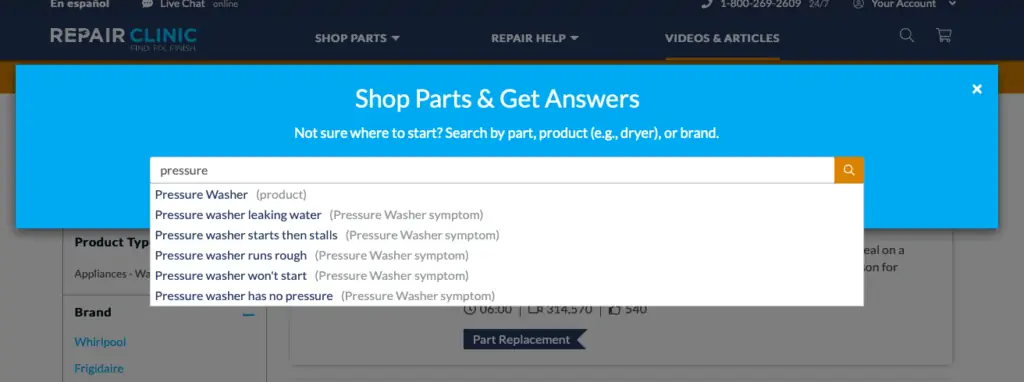How-to guides and other educational content can be extremely effective for e-commerce sites, both for marketing, and as a way to increase conversion.
In this article, we’ll look at some examples of how online retailers use content, and how it can be used on and off-site.
What is how-to content?
This refers to content used on ecommerce sites which aims to help shoppers. This could mean content which helps users to select the right product, find the best fit for clothing, or which offers practical advice on things like DIY or gardening.
This kind of content can on and off site:
- On-site, it helps to solve customer problems and questions, and this can mean more sales.
- Content can work off-site, as it can help attract visitors through search. If your content helps to solve shoppers’ problems, then your potential customers may well be searching for these answers.
Why should retailers produce how-to guides?
There are a number of benefits to content like this:
- If you can solve shoppers’ problems, then it generates good feeling towards your site. Even if it doesn’t lead to purchase, you’ve still made an impression on target customers.
- If brands can demonstrate expertise, it can improve trust in the brand and its products.
- Useful content like buyers’ guides and tips is likely to be shared around, increasing the reach of the content.
- It can help retailers to target long tail search terms.
- Searches with phrases like ‘how do I fix a lawn mower’ mean they’re not only looking fix the problem, but they may also be out to buy the tools needed to complete the task.
- How-to content is evergreen. Helpful content can take more time and effort as it can work over a longer period of time, providing a useful resource for visitors and a consistent source of search traffic.
- Conversion. If the main barrier to shoppers buying clothing items like jeans is doubts about sizing, then well-written and helpful guides can move them towards a purchase.
Examples of how-to content from ecommerce sites
These expamples show the kinds of content brands can create, and how effective it can be in SEO terms.
Wickes
Let’s start with how effective this content can be for Wickes in terms of search positioning.
Here’s Google’s search listings for a search of laying decking.

Wickes is dominating this result. First, the YouTube video commands much of the space above the fold, and also has the first organic result, pushing rival B&Q (diy.com) and others further down the page.
It even ranks for two or three of the ‘people also asked’ results. In terms of search visibility, this is an impressive result. (NB: the ‘people also asked’ lists are a great source of ideas for related how-to content.

The landing page for the organic result has the YouTube video embedded, and contains a visual step by step guide to preparing the area and laying decking.

It’s great content which is really helpful for home DIY, and attracts the exact target audience for the products Wickes sells.
The page doesn’t overdo the selling – it just lists the materials and tools people will need for the job, linking them to the relevant category and product detail pages.
Reiss
Reiss uses tailoring guides to help its customers find the best suits and other clothes to fit their shape.
This works in two ways – Reiss ranks well for terms around the topic, and this content helps their own shoppers to find products that suit them.

Tailoring guides have their own section on the site, but they’re also highlighted on product pages where customers are making decisions about what to buy.
There’s also useful content on sizing and measurement shown on the product page via overlays like the one below.

The key here is that customers can access this content where they need it, and that it’s useful enough to help them make an informed decision.
Repair Clinic
Repair Clinic ranks well for a lot of searches related to DIY and product issues. How-to content is essential to help it rank for these terms, and to guide shoppers through the process of finding solutions.
The website is set up around its content, so for example you can also search on-site for problems with certain tools.

Repair Clinic has plenty of content related to these issues, and provides customers with the help they need to fix the problems, and points them to the parts and tools they’ll need.

In summary
Practical how-to content as shown in these examples can take some time, expertise and an investment in resources to produce it, but it can pay off over time.
It may not suit every brand, but for those selling products or service that solve practical problems for customers, then producing content about these issues is a great marketing strategy.
When executed well, the content matches the kinds of problems the target customer base is looking to solve, and content can be mapped around this.
Providing resources like this on-site means that your target customers don’t need to head to sites from publishers and blogs to find what they need.
The bonus is that, while they’re reading how-to guides, they’re just a click away from some of the products they need.
While content should be produced to be useful to readers, the SEO value shouldn’t be underestimated.
